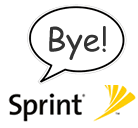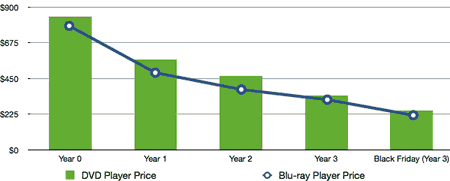 This is just a reminder that as of 1/1/10, Sprint is changing their contracts to add a “Regulatory Charge” of 20 cents per month. Despite the name, this is nothing but an increase in your monthly plan cost, as it is not a consumer tax nor is it required by law. Because of this voluntary fee hike, you can now cancel your Sprint contract without an early termination fee (ETF). You must do this within 30 days of notification (check your billing statement).
This is just a reminder that as of 1/1/10, Sprint is changing their contracts to add a “Regulatory Charge” of 20 cents per month. Despite the name, this is nothing but an increase in your monthly plan cost, as it is not a consumer tax nor is it required by law. Because of this voluntary fee hike, you can now cancel your Sprint contract without an early termination fee (ETF). You must do this within 30 days of notification (check your billing statement).
After some early pushback, it appears that most Sprint reps are now aware of this legitimate out. Commenter Stephan also shared a handy script that has been used successfully by several readers:
“Hello. I’m calling about my current contract with Sprint and the new 40 cents per line regulatory charge that Sprint will be introducing this January. The latest Terms & Conditions contract I signed with Sprint was in [year], and under that contract, it specifically states that as a Sprint customer, I have the right to terminate my contract without paying an early termination fee in the event that Sprint makes a material change to its agreement with me, and so long as I notify Sprint of my desire to do so within 30 days of such a change. This new 40 cent per line regulatory charge constitutes a material change to the Terms & Conditions agreement I signed, and therefore, I would like to exercise my right under the agreement to terminate my contract without any early termination fee.”
A few testimonials:
I called today read the script that Stephan wrote and it was like magic.. she didn’t argue just said.. ok sir.. but you will need to wait to cancel till Jan 1st 2010 and forward me to her managers voicemail to state thats what I want to do.
The beauty of information on the Internet! I ordered two Iphones with At&t last week and placed my call today with Sprint. The call took maybe 35 seconds. All I mentioned was “I want to terminate my contract and port both of my numbers to another carrier because of the 2010 regulatory charge”. The sprint rep said “you’re certainly entitled to do that sir”. Then, he gave me a confirmation number which waived the EFTS on both lines. The end. I already ported one Iphone today, working great.
I gave the spiel that Stephan scripted out above, and it worked like a charm:) I was put on hold for about 10 minutes and when the rep came back on the line she told me that I was set up to terminate on January 26th. (This is because my billing cycle starts and ends on the 26th. They cannot prorate, they set the termination at the end of your current billing cycle so keep this in mind.)
If pressed, you should always focus on the fact that they made a material change to your contract and by law you are allowed to cancel without a ETF. Don’t get sidetracked by your satisfaction with your phone, coverage, etc. If you don’t get satisfaction immediately, either ask for a supervisor or simply hang up and talk to another customer service representative. Good luck!
Update: Instead of *2, you may find it faster to call Sprint’s Cancellation (formally called “Retentions”) department directly if you run into long hold times. Try 888-567-5528, 800-235-1185, or 888-211-4727.
 I was catching up on some blog reading and caught an old post from Plonkee about the different ways that couples can manage their finances. The three different methods were categorized as communist, socialist, or capitalist. Rather controversial, eh? Don’t get too excited folks, just read on:
I was catching up on some blog reading and caught an old post from Plonkee about the different ways that couples can manage their finances. The three different methods were categorized as communist, socialist, or capitalist. Rather controversial, eh? Don’t get too excited folks, just read on:




 The Best Credit Card Bonus Offers – March 2024
The Best Credit Card Bonus Offers – March 2024 Big List of Free Stocks from Brokerage Apps
Big List of Free Stocks from Brokerage Apps Best Interest Rates on Cash - March 2024
Best Interest Rates on Cash - March 2024 Free Credit Scores x 3 + Free Credit Monitoring
Free Credit Scores x 3 + Free Credit Monitoring Best No Fee 0% APR Balance Transfer Offers
Best No Fee 0% APR Balance Transfer Offers Little-Known Cellular Data Plans That Can Save Big Money
Little-Known Cellular Data Plans That Can Save Big Money How To Haggle Your Cable or Direct TV Bill
How To Haggle Your Cable or Direct TV Bill Big List of Free Consumer Data Reports (Credit, Rent, Work)
Big List of Free Consumer Data Reports (Credit, Rent, Work)